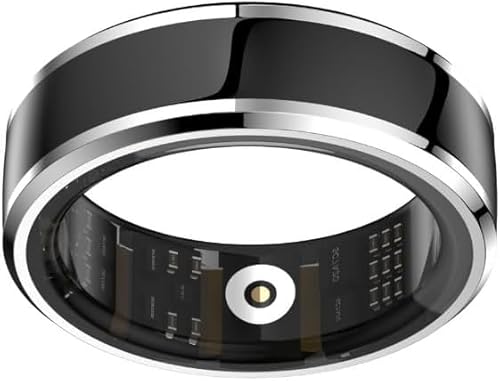Very nice article, Kim. Here's the article in it entirety for those who can't access it- alas without the picture of Kim and her beautiful family.
--------------------------------------------------------------------------------
April 18, 2006
In Heart Disease, the Focus Shifts to Women
By DENISE GRADY
Kim Kachmann-Geltz did everything right. She ran five miles a day, dutifully ate oatmeal and wheat toast, stayed slim, never smoked. Her blood pressure was perfect. Her genes, she thought, were lucky: her great-grandmother had lived to 102.
"I'm the last person in the world I could ever imagine having heart disease," said Ms. Kachmann-Geltz, of Hilton Head, S.C., who is 39 and the mother of three children.
But since 2003 she has suffered from angina, chest pain caused by inadequate blood flow to the heart. In addition, one chamber of her heart has shown signs of enlargement, and her heart valves do not work properly. She takes four heart medicines and may eventually need more. Even with the drugs, chest pain keeps her from running. She walks instead, and does yoga.
"It's not a death sentence," she said. "You don't have to live your life depressed."
But her outlook is a mixed message. She describes her prognosis as good and yet also says the disease may shorten her life.
"We just don't know," she said. "That much has been made clear to me."
Her case is unusual: angina more often strikes older women. Still, coronary artery disease is the leading cause of death in women over 25, killing more than 250,000 a year in the United States. Before they reach their 60's, women are less likely than men to develop heart problems, but once the disease does occur, women often fare worse than men.
Since 1984, more women than men have died each year from heart disease, and though overall coronary death rates have dropped in recent decades, most of the improvements have been in men.
Puzzling differences have emerged between men and women with heart disease, making it plain that past studies, mostly done on men, do not always apply to women. Researchers have come to realize that to improve diagnosis and treatment for women, they must sort out the differences.
"Every time we turn around, we find more gender differences, so it's important to study," said Dr. C. Noel Bairey Merz, a cardiologist at Cedars-Sinai Medical Center in Los Angeles.
Among the differences are these:
¶Women with chest pain and other heart symptoms are more likely than men to have clear coronary arteries when tests are performed, a surprising result that suggests there may be another cause for their problems.
¶When women do have blocked coronary arteries, they tend to be older than men with similar blockages and to have worse symptoms, including more chest pain and disability. These women are also more likely to have other problems like high blood pressure, high cholesterol and diabetes, which may make surgery riskier. And they are more likely than men to develop heart failure, a weakening of the heart muscle that can be debilitating and ultimately fatal.
¶When women have bypass surgery or balloon procedures for coronary blockages, they are less likely than men to have successful outcomes, and they are more likely to suffer from bad side effects.
¶Blood tests that reliably pick up signs of heart damage in men do not always work in women.
¶Women seem much more likely than men to develop a rare, temporary type of heart failure in response to severe emotional stress.
"We don't have good explanations for these gender differences," said Dr. Alice K. Jacobs, a cardiologist at Boston University.
She said that one reason women have not fared as well as men after bypass surgery and balloon procedures may be that women are smaller, and so are their blood vessels, and the vessels may tend to clog up again more easily after the procedures.
In addition, surgeons performing bypasses in women have been less likely to use an artery from inside the chest wall, because it is smaller and harder to work with ? even though using the chest artery instead of a leg vein gives most patients better odds of long-term survival.
In the past, Dr. Jacobs said, cardiologists had only big balloons and bulky tubing to open blocked vessels, and some of the equipment may have been too large for women.
"Now we have tiny wires, balloons and stents, and it's less of an issue," she said, adding that success rates in women were improving.
Women like Ms. Kachmann-Geltz have become an important focus of study. Her doctors believe she has an insidious type of heart disease, more common in women than men, that researchers are just beginning to understand.
These patients have chest pain and abnormal stress tests. Their heart muscle is starved and aching for oxygen ? and yet their coronary arteries look wide open on an angiogram, the test in which doctors inject the vessels with dye and then X-ray them to spot blockages.
Some of these women also score poorly on a simple survey ? the Duke Activity Status Index ? that gauges their strength and ability to exercise by asking questions like whether they can walk up a flight of stairs or run a short distance. A low score is a reliable predictor of more heart problems to come.
For those with symptoms, the real, underlying problem may be a disorder called microvascular disease, a narrowing or stiffening of the smaller arteries that nourish the heart, vessels too tiny to show up on an angiogram.
"These little arterioles are deciding where relatively low and higher blood flow should occur," said Dr. Bairey Merz, explaining that the smaller vessels are more muscular than large ones, and their walls contract or relax to regulate blood flow.
In microvascular disease, the small vessels lose their ability to dilate and increase blood flow to the heart. The cause does not seem to be fatty deposits like the ones that can block the coronary arteries.
Rather, the muscles in the arterioles thicken, a process called remodeling, and the walls may stiffen and begin to close in. The result is ischemia, lack of blood flow. Over time, it increases the risk of heart failure and heart attacks.
Three million women in the United States may have microvascular heart disease, said Dr. Bairey Merz, chairwoman of a government-sponsored study of the disorder, called Wise, for Women's Ischemia Syndrome Evaluation.
That study, begun in 1996, included 936 women who had angiograms because of symptoms like chest pain. Their average age was 58, but a quarter were younger and premenopausal.
The angiograms found that only a third had blockages in their coronary arteries. In men with similar symptoms, three-quarters or more would have had severe blockages, said Dr. Carl J. Pepine, an investigator in the study and the chief of cardiovascular medicine at the University of Florida.
Another third of the women had no blockages but did have low blood flow to the heart, most likely a result of microvascular disease. The deficiency was found by a test in which doctors first measured blood flow through the heart and then injected a drug that should have made the arteries dilate and increased the flow. If the flow did not rise, the patient most likely had microvascular disease.
Among those judged to have the disorder, the rate of deaths or heart attacks was 10 percent after four years ? much higher than would be expected for women with normal angiograms.
The findings call for a major shift in the treatment of women with chest pain or other symptoms and normal angiograms, said Dr. George Sopko of the National Heart, Lung and Blood Institute. "Instead of tossing aside the angiogram and saying you're O.K., let's make sure we are not missing anything."
Doctors should use the Duke survey and consider other tests that can pick up signs of ischemia. And since recent studies have also suggested that women who score high on measures of hostility have an increased risk of heart problems, Dr. Sopko said: "If a woman comes in and has symptoms, let's be careful when we evaluate her. Let's listen to her, look at all the risk factors and include the psychosocial evaluation."
High cholesterol and high blood pressure are almost certainly among the causes of microvascular disease, and it is essential to treat them aggressively in women with chest pain, Dr. Pepine said, and to urge women to exercise, avoid smoking and lose weight if they are too heavy.
Recent studies have found that high blood pressure ? particularly high readings in the top number, the systolic pressure ? is a more serious risk factor in women before menopause than after, and researchers say it should be monitored and treated.
"You don't want to be disabled and lead a miserable life," Dr. Pepine said. "Women who develop heart failure tolerate it much more poorly than men, and they tolerate heart attacks and bypass surgery more poorly than men. We don't want them to get to that stage."
The meaning of other findings is less clear, Dr. Sopko said, adding that researchers were debating what if anything to do for women who had high levels of a substance called C-reactive protein, a marker for inflammation, which is thought to play a role in heart disease.
"We know it appears to be a marker for atherosclerosis," Dr. Sopko said, "but that is far from saying we have to act on that marker with such and such strategies. Simple, fairly appealing strategies may not work out that well. We have to go back and get better knowledge."
Why microvascular disease might be more common in women than men is unknown. Inflammation and anemia, both more common in women, have been suggested as possible factors, along with hormonal fluctuations, but none have been proved.
Some researchers think microvascular disease may help explain some of the other gender differences ? why, for instance, women tend to have worse symptoms than would be expected based on the condition of their coronary arteries.
But microvascular disease is not easy to detect. When doctors see clean coronary arteries on an angiogram, they may not take a patient's chest pain seriously or recommend more tests or treatment.
"I was treated like a crazy woman," Ms. Kachmann-Geltz said, noting that one doctor offered her tranquilizers, implying that her problems were all in her head.
Her symptoms began during her third pregnancy, and her heart function deteriorated so much that she nearly died during labor, she said, recalling that a nurse in the delivery room actually asked whether she was an organ donor.
After her son was born, she suffered from angina for almost two years and had attacks that woke her up at night, before she found her way to Dr. Pepine.
Tests showed a blood flow deficit in her heart.
"It was 30 seconds that changed my life," she said. "It was the first time I felt acknowledged. This is real, it's not in my head, it's not some pregnancy thing. I shake when I think about it."
It is impossible to say why the disease developed, but she noted that her mother also has heart disease. In any case, Ms. Kachmann-Geltz she began treatment with a diuretic and other medicines to control her blood pressure and cholesterol.
"My world started coming back to me," she said. "It took about four months. I started to regain energy, and stopped having nighttime sweats and chest pain. I was able to start living my life again."
Home
World U.S. N.Y. / Region Business Technology Science Health Sports Opinion Arts Style Travel Jobs Real Estate Autos Back to Top
Copyright 2006 The New York Times Company
Privacy Policy Search Corrections XML Help Contact Us Work for Us Site Map






















